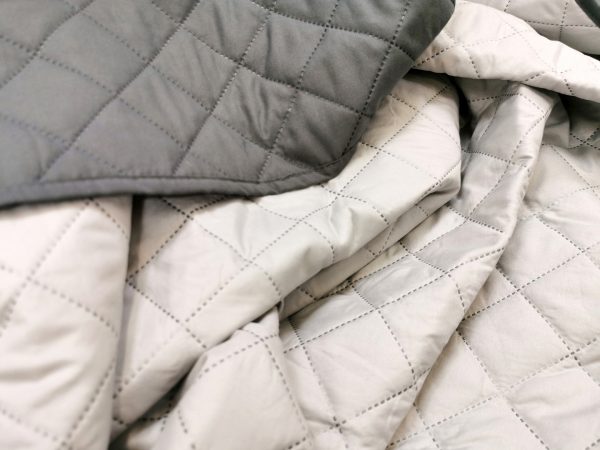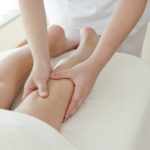Do Weighted Blankets Help Reduce Anxiety?
Is there any evidence that a weighted blanket can make someone feel less anxious?
Andrew Weil, M.D. | November 16, 2021

There is ample evidence that using a weighted blanket may provide therapeutic benefits for those with certain sensory issues, including autism. These devices, which can weigh between five and 30 pounds, have also been studied for their potential benefits for those with insomnia, restless leg syndrome, and, yes, anxiety. Although the evidence of a providing a significant health benefit isn’t particularly strong, many people find that weighted blankets simply make them feel better.
Weighted blankets seem to mimic the effects of “deep pressure touch,” a technique used in occupational therapy for patients with autism and other conditions with a sensory component. Deep pressure touch has been known for decades to have a calming effect on patients with emotional dysregulation, similar to the effect swaddling has on fussy infants. The perception of weight pressing on us provides proprioceptive input, which is the sensory input that allows the brain to know where the body is. That is why therapists may use weighted vests or blankets to reduce distress in children with proprioceptive dysfunction (often associated with autism).
To investigate the effect of these blankets on anxiety, one study looked at 122 patients in a mental health facility over a five-month period, half of whom used weighted blankets or a weighted lap pad for a 20-minute period daily. The other half used unweighted blankets. All patients were tested for anxiety and had their pulse rate recorded before the test period. The group that used weighted blankets showed both reduced anxiety and lower pulse rates after using them than the control group did.
Another study looked at the anxiety-reducing effect of weighted blankets on cancer patients receiving chemotherapy infusions; each patient used a weighted blanket during either the first or second infusion and was evaluated for anxiety. The study found that patients using a weighted blanket during an infusion experienced less anxiety than those not using a weighted blanket.
Although many of the studies on weighted blankets have focused on individuals with significant sensory or emotional disorders, these products are now widely available to consumers outside of therapeutic settings. They should never be used on infants, where (like all blankets) they present a risk of suffocation, but they may be used safely on older children and adults and may provide a measure of soothing calm.
Andrew Weil, M.D.
Sources:
Becklund AL, Rapp-McCall L, Nudo J. “Using weighted blankets in an inpatient mental health hospital to decrease anxiety.” J Integr Med. 2021 Mar;19(2):129-134. doi: 10.1016/j.joim.2020.11.004. Epub 2020 Nov 28. PMID: 33317955. https://pubmed.ncbi.nlm.nih.gov/33317955/
Krauss KE. “The effects of deep pressure touch on anxiety.” Am J Occup Ther. 1987 Jun;41(6):366-73. doi: 10.5014/ajot.41.6.366. PMID: 3688151. The effects of deep pressure touch on anxiety – PubMed (nih.gov)
Vinson J, Powers J, Mosesso K. Weighted Blankets: Anxiety Reduction in Adult Patients Receiving Chemotherapy. Clin J Oncol Nurs. 2020 Aug 1;24(4):360-368. doi: 10.1188/20.CJON.360-368. PMID: 32678376. https://pubmed.ncbi.nlm.nih.gov/32678376/
http://www.grandin.com/inc/squeeze.html
Barnard, K. E., & Brazelton, T. B. (Eds.). (1990). Touch: The foundation of experience: Full revised and expanded proceedings of Johnson & Johnson Pediatric Round Table X. International Universities Press, Inc. https://psycnet.apa.org/record/1990-98640-000
Blanche, Erna Imperatore et al. “Proprioceptive processing difficulties among children with autism spectrum disorders and developmental disabilities.” The American journal of occupational therapy: official publication of the American Occupational Therapy Association vol. 66,5 (2012): 621-4. doi:10.5014/ajot.2012.004234 https://www.ncbi.nlm.nih.gov/pmc/articles/PMC3754787/












